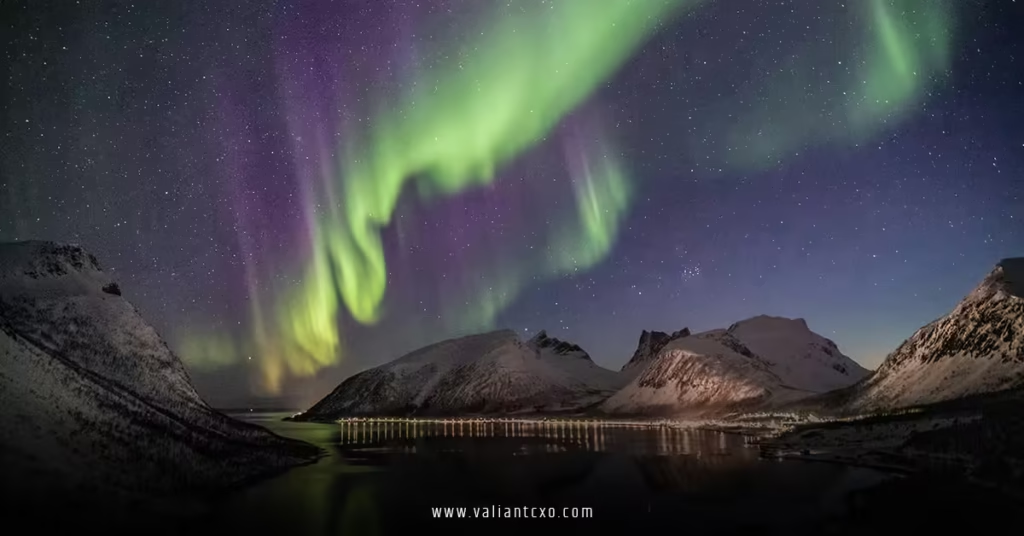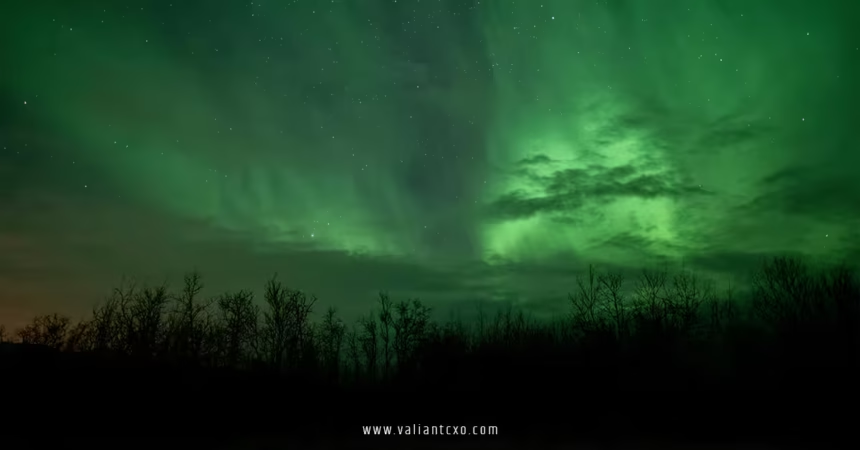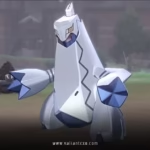Northern lights aurora forecast for photographers is your ticket to chasing one of nature’s most breathtaking spectacles. Imagine standing under a velvet sky, camera in hand, as vibrant greens, purples, and pinks dance across the heavens. For photographers, the aurora borealis isn’t just a natural phenomenon—it’s a canvas of light begging to be captured. But how do you know when and where to catch this elusive display? That’s where a reliable northern lights aurora forecast for photographers comes in, blending science, timing, and a sprinkle of luck to help you snap that perfect shot. In this guide, we’ll dive into everything you need to plan your aurora-chasing adventure, from understanding forecasts to choosing the best gear and locations. Ready to make your aurora dreams a reality? Let’s get started.
Why the Northern Lights Aurora Forecast for Photographers Matters
Ever tried chasing the northern lights without a plan? It’s like trying to catch fireflies in a storm—frustrating and often fruitless. The aurora borealis is caused by charged particles from the sun colliding with Earth’s atmosphere, creating those mesmerizing light shows. But the aurora is unpredictable, and that’s where a northern lights aurora forecast for photographers becomes your best friend. These forecasts use real-time data to predict when and where the lights will appear, helping you avoid wasted nights staring at a blank sky.
Forecasts are built on metrics like the Kp index, which measures geomagnetic activity on a scale of 0 to 9. A higher Kp means a stronger aurora, visible farther south. For photographers, this data is gold—it tells you when to grab your gear and head out. But it’s not just about science. A good forecast also considers cloud cover, moon phases, and local weather, all of which can make or break your shot. Without this intel, you’re gambling with your time and energy.
The Science Behind the Northern Lights Aurora Forecast for Photographers
Let’s break it down. The aurora happens when solar wind—streams of charged particles from the sun—hits gases in Earth’s atmosphere. This collision produces light, much like a cosmic neon sign. The northern lights aurora forecast for photographers relies on space weather data from organizations like NOAA’s Space Weather Prediction Center to predict these events. They track solar flares and coronal mass ejections (CMEs), which boost auroral activity. When a CME is headed our way, forecasts light up with high Kp values, signaling a potential show.
But here’s the catch: even a strong forecast doesn’t guarantee a visible aurora. Clouds, light pollution, or a bright moon can hide the spectacle. That’s why photographers need to pair space weather data with local weather forecasts. Apps like Aurora Alerts or websites like SpaceWeatherLive combine these factors, giving you a clearer picture of your chances. Think of it as a weather report for the cosmos—essential for planning your shoot.
How to Read a Northern Lights Aurora Forecast for Photographers
Reading a northern lights aurora forecast for photographers is like deciphering a treasure map. The key elements are the Kp index, auroral oval, and local conditions. The Kp index tells you the strength of the geomagnetic storm. A Kp of 3 or higher means the aurora might be visible in northern regions like Iceland or Alaska. A Kp of 5 or more? You could see it as far south as parts of the U.S. or Europe.
The auroral oval is the ring-shaped zone around the magnetic poles where the lights are most active. Forecasts show this oval’s position, helping you pick a location within its reach. For example, if you’re in Tromsø, Norway, a strong auroral oval over Scandinavia means you’re in prime viewing territory. Finally, check local weather for clear skies and minimal light pollution. Websites like Aurora Service offer detailed maps and alerts tailored for photographers, making it easier to plan your shoot.
Timing Is Everything: When to Chase the Northern Lights
Timing can make or break your aurora photography. The northern lights aurora forecast for photographers often highlights the best months—September to March in the Northern Hemisphere—when nights are long and dark. Late fall and early winter are prime, with September and October offering milder weather for outdoor shoots. But don’t just rely on the season. Check short-term forecasts for solar activity spikes, which can happen anytime.
The best time of night? Usually between 10 p.m. and 2 a.m., when geomagnetic activity peaks. A new moon is ideal, as a bright moon can wash out fainter auroras. Pro tip: set up alerts on aurora apps to get real-time updates. Nothing’s worse than missing a Kp 7 event because you were binge-watching your favorite show!
Best Locations for Northern Lights Aurora Forecast for Photographers
Where should you go to capture the aurora? The northern lights aurora forecast for photographers points to spots within the auroral oval, typically between 60 and 75 degrees latitude. Think Iceland, Norway, Sweden, Finland, Canada, and Alaska. Each offers unique landscapes to frame your shots, from Iceland’s waterfalls to Canada’s frozen lakes.
Top Destinations for Aurora Photography
- Iceland: With its open landscapes and minimal light pollution, Iceland is a photographer’s dream. Places like Thingvellir National Park or the black sand beaches of Vík are perfect for dramatic aurora shots. Check local forecasts for clear skies, as Iceland’s weather can be fickle.
- Norway: Tromsø and the Lofoten Islands are aurora hotspots. The northern lights aurora forecast for photographers often shows strong activity here, and the rugged fjords add a stunning backdrop.
- Canada: Head to Yukon or Manitoba for wide-open skies and vibrant displays. Churchill, Manitoba, is a dual win—you might snap polar bears and auroras in one trip!
- Alaska: Fairbanks and Denali National Park offer prime viewing with accessible roads. The northern lights aurora forecast for photographers often highlights Alaska during strong geomagnetic storms.
Wherever you go, prioritize dark-sky locations. Light pollution is the enemy of aurora photography, so scout rural spots away from cities. Use apps like Light Pollution Map to find the darkest skies near your chosen destination.

Gear and Settings for Photographing the Northern Lights
Your camera is your paintbrush, and the northern lights aurora forecast for photographers is your guide to the canvas. But what gear do you need? A DSLR or mirrorless camera with manual settings is ideal. Wide-angle lenses (14-24mm) with a fast aperture (f/2.8 or lower) capture more light and sky. A sturdy tripod is non-negotiable—long exposures are key.
Camera Settings for Aurora Photography
- ISO: Start at 800-3200, adjusting based on aurora brightness. A strong aurora (Kp 5+) might need a lower ISO to avoid overexposure.
- Shutter Speed: Use 5-20 seconds for long exposures. Faster-moving auroras require shorter exposures (5-10 seconds) to capture details.
- Aperture: Open wide (f/2.8 or lower) to let in maximum light.
- Focus: Set to manual focus and use infinity (∞) or focus on a distant object like a star. Test shots ensure sharpness.
- White Balance: Set to 3500-4000K for natural colors, or tweak in post-processing.
Bring extra batteries—cold nights drain them fast. A remote shutter release or intervalometer helps avoid camera shake. And don’t forget warm clothing; standing still in subzero temps isn’t a joke!
Planning Your Northern Lights Aurora Forecast for Photographers Trip
Planning a northern lights aurora forecast for photographers trip is like assembling a puzzle. Start with the forecast—check long-term solar activity trends and short-term alerts. Book accommodations in aurora-friendly locations, ideally with flexible cancellation policies in case the forecast shifts. Guided tours can be a game-changer, especially in places like Iceland or Norway, where local experts know the best spots and read forecasts like pros.
Pack for the cold and plan for long nights. A thermos of hot coffee and hand warmers can make those chilly stakeouts bearable. Scout your shooting location during the day to nail your composition—foreground elements like trees or mountains add depth to your photos. And always have a backup plan; if clouds roll in, know alternative spots nearby.
Apps and Tools for Aurora Chasing
Technology is your ally. Apps like Aurora Alerts, My Aurora Forecast, or Aurora Notifier provide real-time updates on Kp levels and auroral activity. Websites like NOAA’s Space Weather Prediction Center offer detailed data for serious planners. For local weather, use apps like AccuWeather or Yr.no to ensure clear skies. Combine these with a northern lights aurora forecast for photographers to maximize your chances.
Tips for Stunning Aurora Photos
Want your photos to stand out? The northern lights aurora forecast for photographers gets you to the right place, but composition and technique seal the deal. Frame your shot with a strong foreground—think lakes, forests, or iconic landmarks. Experiment with long exposures to capture the aurora’s movement, but don’t overdo it; too long, and you’ll blur the details.
Post-processing is your secret weapon. Use software like Adobe Lightroom to enhance colors and reduce noise. Adjust highlights to make the aurora pop without looking unnatural. And don’t be afraid to practice—aurora photography is a skill, and every night under the lights teaches you something new.
Common Mistakes to Avoid
Even with a solid northern lights aurora forecast for photographers, mistakes happen. Don’t rely solely on the forecast—check local weather too. Avoid shooting near city lights; light pollution can ruin your shot. And don’t skimp on preparation—failing to test your gear or dress warmly can turn a dream shoot into a nightmare. Finally, don’t expect every night to deliver; the aurora is wild and unpredictable, so patience is key.
Conclusion
Chasing the northern lights aurora forecast for photographers is an adventure that blends science, art, and a dash of magic. By understanding forecasts, choosing the right locations, and mastering your camera settings, you’re setting yourself up for jaw-dropping photos that capture the sky’s greatest show. Whether you’re in Iceland’s rugged wilds or Alaska’s frozen tundra, the aurora is waiting to dazzle you. So grab your gear, check those forecasts, and head out into the night. Your perfect aurora shot is out there—go catch it!
FAQs
1. How accurate is the northern lights aurora forecast for photographers?
The northern lights aurora forecast for photographers is fairly reliable but not foolproof. It uses space weather data like the Kp index and solar activity, combined with local weather conditions. However, cloud cover or unexpected solar shifts can affect visibility, so always have a backup plan.
2. What’s the best time of year for aurora photography?
The best time is September to March, when nights are longest in the Northern Hemisphere. The northern lights aurora forecast for photographers often highlights fall and early winter for optimal conditions, with clear skies and strong solar activity.
3. Do I need expensive gear to photograph the northern lights?
Not necessarily! A camera with manual settings, a wide-angle lens, and a tripod will do the trick. The northern lights aurora forecast for photographers helps you plan, but good technique and affordable gear can still produce stunning results.
4. Can I see the aurora in southern locations like the U.S. or Europe?
Yes, during strong geomagnetic storms (Kp 5+), the aurora can appear farther south. The northern lights aurora forecast for photographers will show when these rare events might occur in places like northern U.S. states or parts of Europe.
5. How do I stay warm while shooting the aurora?
Dress in layers, use hand and foot warmers, and bring a thermos of hot liquid. The northern lights aurora forecast for photographers gets you to the right spot, but staying warm ensures you can focus on your shots without freezing.
Read Also:valiantcxo.com


